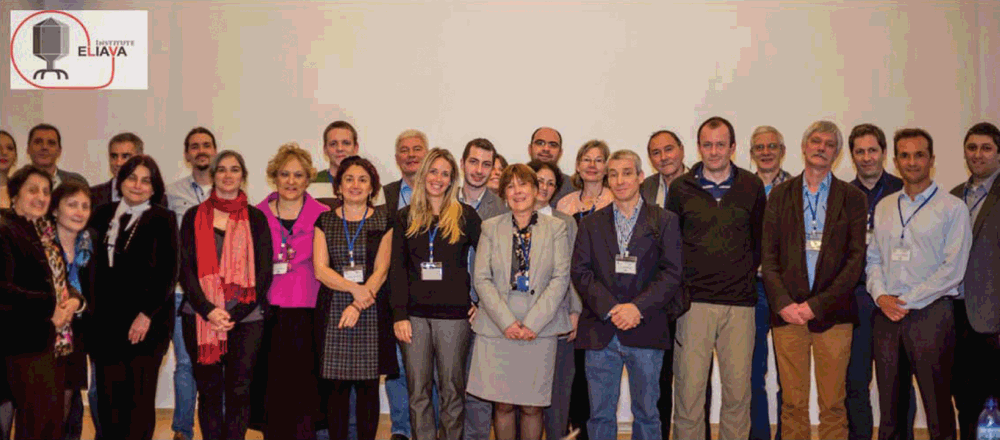Bacteriophages
İpek Kurtböke A , Nina Chanishvili B and Jeremy J Barr CA University of the Sunshine Coast, School of Science and Engineering and the GeneCology Research Centre, Maroochydore DC, Qld 4558, Australia
B Eliava Institute, Gotua Street 3, 0160, Tbilisi, Georgia
C School of Biological Sciences, Monash University, Clayton, Vic. 3800, Australia
Microbiology Australia 40(1) 3-4 https://doi.org/10.1071/MA19002
Published: 13 March 2019
In order to avoid a return to the pre-antibiotic era, alternative treatments to combat microbial diseases are urgently needed. In this context, bacteriophages, which have been used effectively in distant parts of the world during the cold war era, are now gaining significant interest in the West. This special issue of the Microbiology Australia thus focusses on bacteriophages with contributions from Australia and from the members of the Expert round table on acceptance and re-implementation of bacteriophage therapy.
During the International Conference titled ‘Bacteriophages as tools for therapy, prophylaxis and diagnostics’, which was held on 19–21 October 2015 in Tbilisi, Georgia at the Eliava Institute1, an ‘Expert Round Table’ was held by multidisciplinary scientists discussing the acceptance and re-implementation of bacteriophage therapy. Since 2015, the ‘Expert Round Table’ participants published opinion papers2,3 including one of the most downloaded Microbiology Australia articles on the ‘Application of Bacteriophages’4.
Within Australia, a Bacteriophage Biology & Therapeutics Special Interest Group (SIG) was recently formed under the umbrella of Australian Society for Microbiology. This issue is thus put together by international participants from the ‘Expert Round Table’, contributions from Bacteriophage Biology & Therapeutics SIG and members of the ASM.
The issue includes an article from Rustam Aminov and Nina Chanishvili outlining the antibiotic resistance problem and the urgent need for alternative therapies. Jean-Paul Pirnay, Daniel de Vos and Gilbert Verbeken give an overview on the clinical applications of bacteriophages in Europe. Keith Potent and Carola Venturini, Alexsandra Petrovic Fabjian and Ruby Lin complement two articles describing bacteriophage therapy and its processes within Australia. Shawna McCallin, Jessica Sacher and Jen Zheng touch on an important aspect of bacteriophage therapy by providing examples on their ‘compassionate use’. Wai Hoe Chin and Jeremy Barr take us into the depths of phage biology with their article titled ‘Phage biology in ‘organ-on-chip’ devices’. Martina Jones tells us about the ‘use of bacteriophage for antibody discovery’. Son Tuan Le and Ipek Kurtböke touch the environmental applications of bacteriophages in their article related to the use of bacteriophages as biocontrol agents in aquaculture settings. Finally, an advanced understanding on the biology of bacteriophages comes from Pavol Bárdy, Dominik Hrebik, Roman Pantůćek and Pavel Plevka on the ‘Future prospects of structural studies to advance our understanding on phage biology’. In a Lab Report, University of the Sunshine Coast students Rhianna O’Regan and Annaleise Wilson present their work on the biological control of E. coli contaminating herbs using bacteriophages.
Jeremy Barr also presents an introduction to the recently established Bacteriophage Biology & Therapeutics SIG Group, which interested Australian researchers are encouraged to join.
The inset photo on the cover for the issue is contributed by the Eliava Institute where bacteriophages are available in their pharmacy for public use.
We conclude by conveying the kind greetings of the Bacteriophage Biology & Therapeutics SIG and the ‘Expert Round Table’ participants from overseas.

|
References
[1] Chanishvili, N. and Sharp, R. (2008) Bacteriophage Therapy: Experience from the Eliava Institute, Georgia. Microbiol. Aust. 29, 96–101.[2] Expert Round Table on Acceptance and Re‐Implementation of Bacteriophage Therapy (2016) Silk route to the acceptance and re‐implementation of bacteriophage therapy. Biotechnol. J. 11, 595–600.
| Silk route to the acceptance and re‐implementation of bacteriophage therapy.Crossref | GoogleScholarGoogle Scholar | 27008250PubMed |
[3] Sybesma, W. et al. (2018) Silk route to the acceptance and re-implementation of bacteriophage therapy—Part II. Antibiotics (Basel) 7, 35.
| Silk route to the acceptance and re-implementation of bacteriophage therapy—Part II.Crossref | GoogleScholarGoogle Scholar |
[4] Aminov, R. et al. (2017) Application of bacteriophages. Microbiol. Aust. 38, 63–66.


